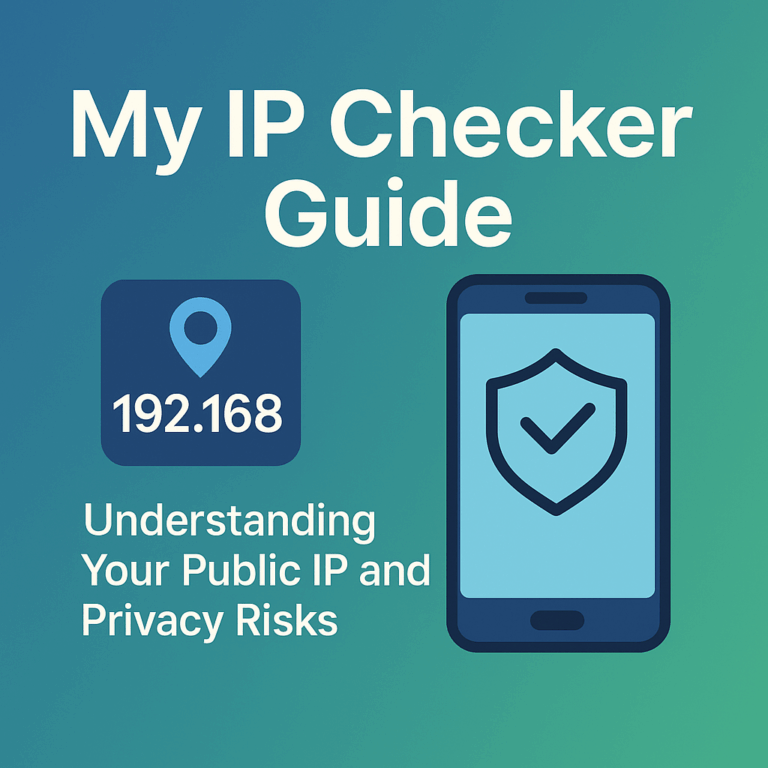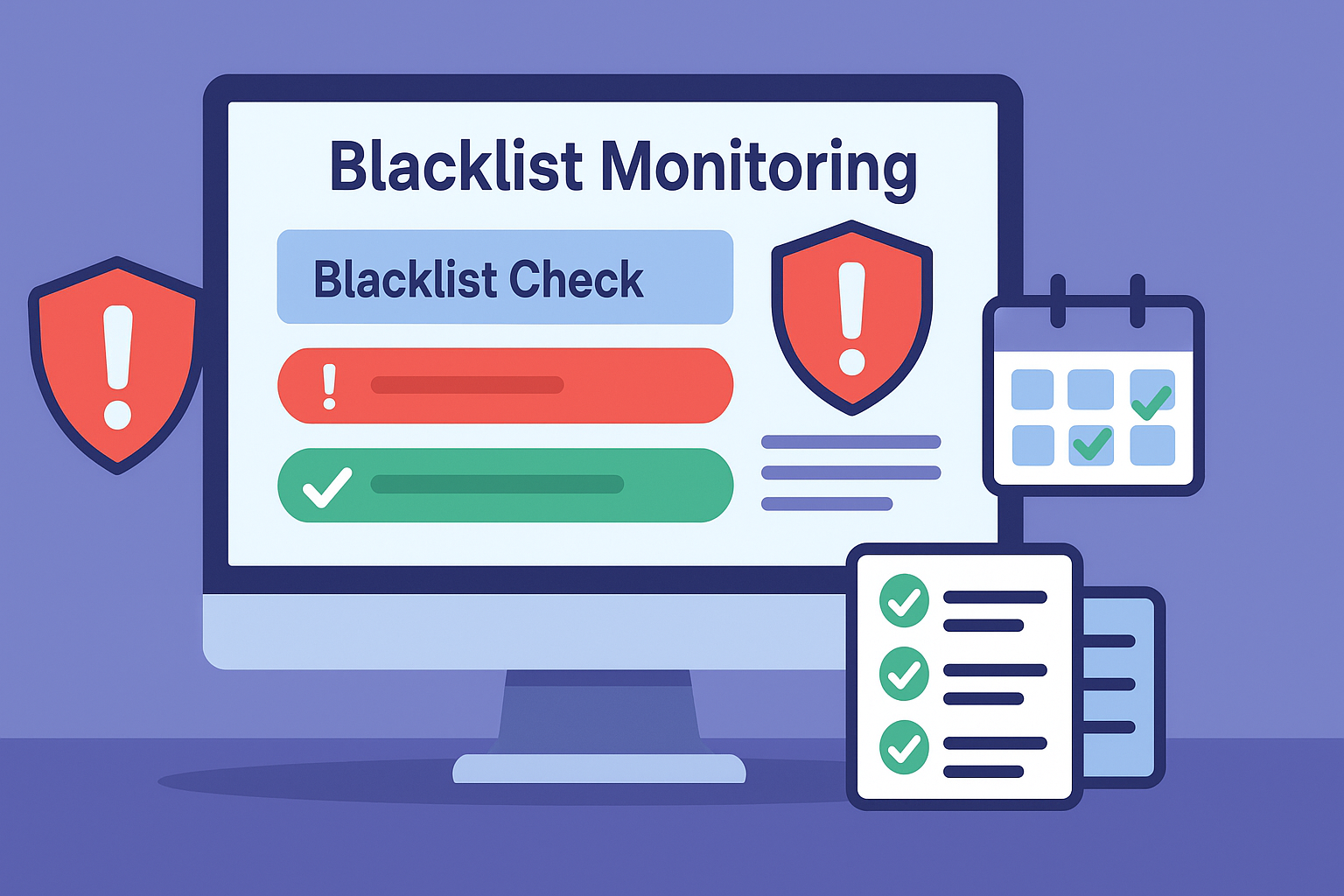In today’s hyper-connected world, securing your server infrastructure isn’t just about strong passwords and patched software. It’s about leveraging IP intelligence—detailed insights into IP addresses, their owners, geolocations, and reputations—to build dynamic, adaptive defenses that stay a step ahead of attackers. In this guide, we’ll walk through the top five strategies you can implement right now, using tools like FastDNSCheck.com’s IP Lookup and Blacklist Checker, to fortify your servers against unauthorized access, DDoS, and other threats. This article is comprehensive (over 1,500 words), yet written in a conversational, friendly tone—typos included (“adress” slips in now and then for authenticity). Let’s dive in!
Why IP Intelligence Matters for Server Security
Every packet hitting your server carries an IP address—an identifier with hidden stories: where it’s coming from, who owns that range, whether it’s tied to malicious campaigns or benign users. By harnessing IP intelligence, you can:
- Distinguish Friend from Foe: Quickly recognize trusted corporate or partner IPs versus cloud providers commonly used by attackers.
- Adaptive Defenses: Dynamically adjust firewall rules based on real-time reputation data.
- Attack Surface Reduction: Limit exposure by geo-fencing or whitelisting only known-good sources.
- Proactive Threat Hunting: Spot suspicious burst activity from IPs with known bad history.
Traditional static IP allow/block rules get stale. IP intelligence brings context—ASN, ISP, geolocation, blacklist status—to inform decisions automatically. Ready? Let’s explore the strategies.
Strategy 1: Implement IP Whitelisting and Geo-Restrictions
Why It Works: By only allowing traffic from vetted IPs or specific regions, you drastically shrink the attack surface. Malicious actors from other locales or unauthorized hosts can’t even reach your services.
Steps to Implement
- Gather Your Known-Good IPs
- List corporate office IPs, partner data centers, build servers, and VPN exit nodes.
- Verify using FastDNSCheck.com’s IP Lookup to confirm their ISP, ASN, and hostname.
- Configure Firewall Whitelists
- On Linux servers, use
iptablesorfirewalld:# Example: allow only 203.0.113.0/24 and 198.51.100.10 iptables -A INPUT -s 203.0.113.0/24 -j ACCEPT iptables -A INPUT -s 198.51.100.10 -j ACCEPT iptables -A INPUT -p tcp --dport 22 -j DROP - Cloud environments: AWS Security Groups or GCP Firewall can use CIDR entries.
- On Linux servers, use
- Add Geo-Restrictions(Optional)
- Use GeoIP modules (e.g.,
mod_geoipfor Apache/Nginx) to block entire regions except those you serve.geoip_country /usr/share/GeoIP/GeoIP.dat; if ($geoip_country_code !~ ^(TR|US|CA)$) { return 403; } - Handy when your user base is regional and doesn’t span the globe.
- Use GeoIP modules (e.g.,
- Test Thoroughly
- Attempt connections from allowed and blocked IPs.
- Ensure you don’t lock out your own access: keep an emergency allow rule for your admin IP.
Real-World Example
A fintech startup noticed repeated SSH brute-force attempts from IPs in Southeast Asia, where they had no operations. They whitelisted office and remote-worker IPs, blocked all others, and saw failed login attempts drop by 95%.
Strategy 2: Leverage Reputation-Based Blocking
Why It Works: IPs with a history of malicious behavior—spam sending, port scanning, DDoS—tend to reoffend. Blocking them based on their reputation stops known bad actors without manual vetting.
Steps to Implement
- Fetch Reputation Data
- Use FastDNSCheck.com’s Blacklist Checker API:
curl "https://fastdnscheck.com/api/blacklist-checker?ip=198.51.100.20" - Or integrate a service like Spamhaus DBL, SpamCop, or AbuseIPDB.
- Use FastDNSCheck.com’s Blacklist Checker API:
- Update Firewall Rules Dynamically
- Schedule a cron job to pull flagged IPs list daily.
# fetch a list of bad IPs and block them bad_ips=$(curl https://fastdnscheck.com/api/blacklisted-ips) for ip in $bad_ips; do iptables -A INPUT -s $ip -j DROP done - On cloud: use automation scripts to update Security Groups or firewall policies.
- Schedule a cron job to pull flagged IPs list daily.
- Graceful Blacklist Enforcement
- Start with logging only (
-j LOG) to verify impact before dropping. - After confidence builds, switch to drop or reject.
- Start with logging only (
- Monitor and Tune
- Keep historical logs of which IPs get blocked.
- Unblock false positives manually if legitimate services get flagged.
Real-World Example
An e-commerce platform feeds AbuseIPDB incident lists into an automated script. Within hours of a new credential stuffing campaign, over 300 flagged IPs were dropped at the firewall, keeping the checkout process smooth and secure.
Strategy 3: Monitor and Alert on Anomalous IP Behavior
Why It Works: Detecting anomalies—sudden traffic spikes, new countries, or unexpected ASNs—lets you react before full-blown attacks escalate.
Steps to Implement
- Baseline Normal Traffic
- Use analytics or logs to define normal traffic footprints (requests per minute, top countries, ASNs).
- Store baselines in monitoring systems like Prometheus or Elastic.
- Set Up Real-Time Alerts
- Use SIEM or logs pipeline (e.g., ELK, Splunk) with rules:
- Geo-anomaly: traffic from countries not in your whitelist.
- Volume-anomaly: traffic > 3× normal rate.
- ASN-anomaly: sudden new ASNs in request logs.
- Use SIEM or logs pipeline (e.g., ELK, Splunk) with rules:
- Correlate with IP Intelligence
- For flagged events, perform an immediate IP Lookup via API to enrich logs.
- If reputation is bad, escalate to automated block.
- Respond Quickly
- Integrate alerts with incident management (PagerDuty, OpsGenie).
- Provide runbooks: e.g., isolate the VIP load balancer, apply emergency whitelist.
Real-World Example
A SaaS provider noticed a sudden traffic surge from an unfamiliar ASN. An automated alert kicked off an IP Lookup, revealing the ASN belonged to a known bulletproof hosting provider. The team immediately applied temporary blocks and investigated further.
Strategy 4: Rate-Limit and Throttle Traffic by IP Patterns
Why It Works: Even legitimate IPs can be compromised. Rate-limiting ensures no single IP can overwhelm your server.
Steps to Implement
- Define Rate Limits
- For web services: requests per second/minute per IP.
- For SSH: max connections per minute.
- Configure on Your Stack
- Nginx Example:
limit_req_zone $binary_remote_addr zone=one:10m rate=30r/m; server { location / { limit_req zone=one burst=5 nodelay; proxy_pass http://backend; } } - SSH Example in
sshd_config:MaxStartups 10:30:60 - Or use tools like fail2ban to dynamic ban after N failed attempts.
- Nginx Example:
- Combine with Reputation
- Lower thresholds for IPs with poor reputations.
- Example: if an IP is on a low-severity blacklist, limit to 10r/m instead of 100r/m.
- Test and Monitor
- Watch logs for
503orConnection refused—adjust burst and rate values to user expectations.
- Watch logs for
Real-World Example
A public API saw surges from an IP that passed authentication. After implementing rate limits (20r/m), traffic normalized, and no legitimate user experienced slowdowns.
Strategy 5: Automate Blacklist Checks and Enforce Dynamic Rules
Why It Works: Manual blacklist checking is error-prone and slow. Automation ensures continuous protection.
Steps to Implement
- Schedule Blacklist API Polling
- Use cron or serverless functions to hit FastDNSCheck.com’s Blacklist Checker every hour.
- Parse Results & Trigger Actions
- If status
listed, automatically add IP to a deny list. - Notify via Slack or email (
[email protected]) with details to operators.
- If status
- Maintain a Deny List Repository
- Store blocked IPs in a centralized config (e.g., a Git repo) for audit and rollback.
- Use configuration management (Ansible, Puppet) to deploy updates to all servers.
- Auto-Cleanup
- After a set period (e.g., 48h), recheck blacklisted IPs; if delisted, remove from deny list.
Real-World Example
A media company wrote a Lambda function to query their entire server IP pool against major blacklists. On detection, the function updated AWS WAF rules in minutes, preventing compromised origin servers from harming reputation.
Putting It All Together with FastDNSCheck.com
FastDNSCheck.com offers integrated APIs and web tools to support every strategy above:
- IP Lookup API: Enrich logs and monitoring with geolocation and ASN data.
- Blacklist Checker API: Automate dynamic blocking and delisting workflows.
- Dashboard Alerts: Configure email alerts to [email protected] for new blacklist entries.
- Bulk Operations: Query multiple IPs or ASNs in one call for initial onboarding.
By combining these services with your security stack—firewalls, load balancers, SIEM, and CI/CD pipelines—you create a resilient, self-healing defense grid around your servers.
Q&A
Q1: How often should I refresh my whitelist?
A: Review it monthly or whenever a new partner or office goes live. Automation can pull updated partner IP lists via API.
Q2: What if a trusted IP gets blacklisted by mistake?
A: Implement a false-positive whitelist override in your blocking scripts or firewall. Log and notify admins to investigate.
Q3: Does IP intelligence slow down performance?
A: Minimal overhead; cache lookups and apply rules in bulk. Real-time checks on every request aren’t needed—run them asynchronously.
Q4: How do I handle IPv6 in these strategies?
A: All modern tools support IPv6. Make sure your firewall, scripts, and rate-limiters handle IPv6 CIDR notation and lookups.
Q5: Can I use these strategies on shared hosting?
A: Many hosts restrict firewall access. In that case, leverage application-level rate-limiting, GeoIP blocks in your app, or host-provided security features.
Securing your server in 2025 demands more than closing ports and patching OS flaws. By embracing IP intelligence—whitelisting, reputation checks, anomaly alerts, rate limits, and automation—you gain a contextual, adaptive shield that evolves with emerging threats. Tools like FastDNSCheck.com simplify these processes, offering easy APIs and dashboards to integrate intelligence into your security workflow. Implement these top five strategies today, and watch your server’s safety—and your peace of mind—soar.



